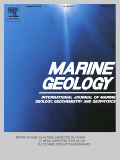
MARINE GEOLOGY
Scope & Guideline
Connecting Geology and Oceanography for a Sustainable Future.
Introduction
Aims and Scopes
- Sediment Dynamics and Transport Processes:
Research in this area emphasizes the mechanisms of sediment transport, including flocculation, turbidity currents, and the influence of various hydrodynamic conditions on sediment distribution. - Paleoenvironmental Reconstructions:
Studies often utilize sediment cores and geochemical analyses to reconstruct past marine environments, focusing on historical climate changes, sea-level fluctuations, and their impacts on sedimentary processes. - Geochemistry and Mineralogy:
The journal publishes research on the geochemical characteristics of marine sediments, including the study of ferromanganese nodules, hydrothermal deposits, and their implications for understanding oceanic processes. - Coastal and Estuarine Geology:
Research focuses on sediment dynamics in coastal settings, including the effects of human activities, storm events, and natural processes on coastal morphology and sedimentation. - Tectonic and Volcanic Influences on Marine Sedimentation:
This area encompasses studies on the effects of tectonic movements and volcanic activities on sedimentation patterns and the geological history of marine environments. - Modern Sedimentary Processes:
Investigations into contemporary sedimentation processes, including the impacts of climate change and anthropogenic influences on marine sediment dynamics.
Trending and Emerging
- Climate Change and Anthropogenic Impact Studies:
Research increasingly focuses on how climate change and human activities affect sediment dynamics, coastal processes, and marine ecosystems, reflecting a growing concern for environmental sustainability. - Advanced Geochemical Techniques:
Emerging studies utilize advanced geochemical techniques, including isotopic analysis and machine learning, to provide deeper insights into sediment provenance and historical climate changes. - Integrated Coastal Management Approaches:
There is a noticeable trend towards studies that combine geological, ecological, and socio-economic perspectives to address coastal management challenges and resilience against climate change. - Interdisciplinary Research on Sedimentary Processes:
Collaborative studies that incorporate geology, oceanography, and biology are becoming more prevalent, allowing for a comprehensive understanding of sediment dynamics and ecosystem interactions. - Technological Innovations in Sediment Analysis:
The application of new technologies like remote sensing, machine learning, and 3D imaging in sediment analysis and mapping is emerging as a significant area of focus, enhancing data collection and interpretation.
Declining or Waning
- Traditional Coral Reef Studies:
Research focusing solely on coral reef ecosystems appears to be diminishing, potentially overshadowed by broader studies incorporating climate change impacts and sediment dynamics. - Historical Tsunami Deposits:
Although historical tsunami studies have been significant, the frequency of publications in this area has decreased as researchers shift towards more contemporary sediment dynamics and climate variability. - Static Geological Mapping:
Research solely focused on static geological mapping without considering dynamic processes or ecological interactions seems to be waning, reflecting a shift towards more integrated, process-oriented studies. - In-depth Studies of Specific Marine Species:
While marine biology remains relevant, the focus on specific species within sedimentary contexts has become less frequent as broader ecosystem-level studies gain traction. - Single-Factor Analyses of Sediment Transport:
Research that examines sediment transport mechanisms in isolation, without considering interactions with biological or chemical processes, is less common as interdisciplinary approaches become more favored.
Similar Journals

JOURNAL OF WATERWAY PORT COASTAL AND OCEAN ENGINEERING
Transforming Research into Practice in Marine EngineeringThe JOURNAL OF WATERWAY PORT COASTAL AND OCEAN ENGINEERING, published by the ASCE - American Society of Civil Engineers, is a premier scholarly journal devoted to the interdisciplinary fields of waterway, port, coastal, and ocean engineering. Since its inception in 1982, the journal has provided a crucial platform for researchers, professionals, and students to share innovative findings and advancements related to the engineering and management of aquatic environments. With an impressive Q2 ranking in multiple categories, including Civil and Structural Engineering, Ocean Engineering, and Water Science and Technology, the journal is recognized for its significant contributions to the field. It seeks to publish high-quality research that addresses both theoretical and practical challenges while promoting sustainable practices in marine and coastal systems. Holding a prominent Scopus rank and providing access to a global readership, the journal stands as an invaluable resource for those dedicated to advancing the science and engineering of water environments.

Aeolian Research
Charting New Terrains in Aeolian ResearchAeolian Research, published by ELSEVIER SCI LTD, is a leading academic journal in the fields of Earth-Surface Processes and Geology, holding a prestigious Q1 category ranking in both disciplines as of 2023. With an ISSN of 1875-9637 and an E-ISSN of 2212-1684, this journal is pivotal for researchers and scholars interested in the intricate dynamics of aeolian processes and their implications for geology and environmental science. Covering a span of research from 2009 to 2024, it regularly disseminates high-impact studies that explore the interactions between wind-driven processes and sediment transport, erosion, and landscape evolution. With a Scopus ranking of #34 and #20 in their respective categories, Aeolian Research serves as an essential resource for advancing knowledge in Earth and Planetary Sciences. While currently not an open-access journal, it delivers compelling insights that are relevant to contemporary challenges in geology and environmental management.
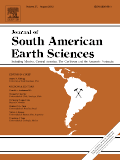
JOURNAL OF SOUTH AMERICAN EARTH SCIENCES
Unlocking the Mysteries of South America's Geological HeritageJOURNAL OF SOUTH AMERICAN EARTH SCIENCES is a premier interdisciplinary journal dedicated to publishing high-quality research in the fields of Earth-Surface Processes, Geology, and Paleontology, making it an essential resource for scientists and researchers focused on South American geology and its diverse geological phenomena. Published by Pergamon-Elsevier Science Ltd in the United Kingdom, this journal has been instrumental in disseminating groundbreaking studies since 1988, showcasing contributions that push the boundaries of knowledge in Earth and Planetary Sciences. With an impressive Scopus ranking—positioning it in the 74th percentile for Paleontology and 71st for Geology—this journal not only reflects robust academic quality but also its commitment to addressing critical geological challenges in South America. Researchers will appreciate its objective of advancing understanding of geological processes while providing insights into past, present, and future Earth environments. Although available through traditional subscription models, the journal's vast repository of articles enriches the academic landscape, facilitating the sharing of vital research among professionals, students, and geological practitioners.

OCEANOLOGY
Connecting Science and the SeaOCEANOLOGY is a distinguished journal published by Pleiades Publishing Inc that has been a pivotal platform for advancing knowledge in the field of oceanography since its inception. With an ISSN of 0001-4370 and E-ISSN 1531-8508, this journal covers a range of topics related to marine sciences, geographical oceanography, and environmental studies, providing insights and research that significantly contribute to our understanding of oceanic systems. Recognized for its academic rigor, OCEANOLOGY holds a Q3 quartile ranking in the Oceanography category as of 2023, reflecting its impact within the scientific community as evidenced by its Scopus rank of 85 out of 145. Although currently not an open-access journal, OCEANOLOGY remains essential for researchers, professionals, and students by offering a comprehensive collection of peer-reviewed articles. This multidisciplinary approach equips its audience with valuable data and perspectives critical for ongoing research and development in ocean-related fields.
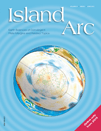
ISLAND ARC
Connecting Scholars Through Geological DiscoveriesISLAND ARC is a prestigious journal dedicated to the field of Geology, published by WILEY. With a strong focus on the geology of island arcs and other related research, it serves as a vital resource for scholars, professionals, and students interested in earth and planetary sciences. The journal, which has been in circulation since 1992, is indexed in Scopus and holds a commendable Q2 ranking in its category for 2023, indicating its significant impact within the geological community. The journal’s ISSN is 1038-4871 and its E-ISSN is 1440-1738. Although it does not currently offer open access, it remains a crucial platform for disseminating high-quality research relevant to geological phenomena, promoting interdisciplinary collaborations and advancing our understanding of geological processes. With an address in Hoboken, New Jersey, ISLAND ARC continues to enhance its global influence and scholarly contributions through rigorous peer review and a commitment to excellence.
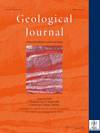
GEOLOGICAL JOURNAL
Illuminating the path of geological research for over seven decades.GEOLOGICAL JOURNAL, an esteemed publication by WILEY, has been at the forefront of geological research since its inception in 1951. With an ISSN of 0072-1050 and E-ISSN of 1099-1034, this journal serves as a vital platform for disseminating high-quality, peer-reviewed research in the field of geology. Operating out of the United Kingdom, the journal proudly features a Scopus rank of 80 out of 321 in the Earth and Planetary Sciences category, reflecting its commitment to scholarly excellence, with a 2023 category quartile ranking of Q2. As part of its innovative approach, GEOLOGICAL JOURNAL seeks to foster interdisciplinary collaborations, advancing our understanding of earth processes, materials, and history. Although it does not offer open access options, its robust subscription model ensures that both professionals and students have access to groundbreaking insights. With a publication history that spans over seven decades, the GEOLOGICAL JOURNAL continues to be an indispensable resource for the global geological community, encouraging discoveries that shape our comprehension of the planet.
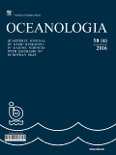
OCEANOLOGIA
Pioneering Insights in Ocean EngineeringOCEANOLOGIA, a distinguished academic journal published by the Polish Academy of Sciences, Institute of Oceanology, serves as a pivotal platform for researchers and professionals in the fields of Aquatic Science, Oceanography, and Ocean Engineering. Established in 1973 and transitioning to Open Access in 2011, this peer-reviewed journal promotes the dissemination of high-quality research across its diverse scope of ocean-related topics, aligning with its commitment to advancing marine science. With a notable impact factor underscored by its positioning in the Q1 and Q2 quartiles of recognized categories, OCEANOLOGIA stands out with impressive Scopus Rankings, including 49/247 in Aquatic Science and 24/105 in Ocean Engineering, reflecting its significance in the global research landscape. The journal's dedication to publishing cutting-edge studies ensures that it continues to influence both academic discourse and practical applications in ocean-related fields, making it an essential resource for students, researchers, and professionals aiming to contribute to the advancement of oceanic studies.

Depositional Record
Elevating interdisciplinary dialogue in sedimentology and beyond.Depositional Record, published by WILEY, stands as a vital resource for researchers and professionals in the fields of Geology, Paleontology, Oceanography, and Environmental Science. Since its inception in 2015, this Open Access journal has been dedicated to advancing the understanding of sedimentary processes, depositional environments, and their implications on Earth's history and contemporary climate dynamics. With an impressive array of categorizations, including Q1 rankings in Geology, Paleontology, and Stratigraphy, it underscores its significant contribution to these scientific arenas. The journal’s reach is reflected in its Scopus rankings, placing it within the top quartiles in multiple categories, indicating the high quality and impact of its published research. Researchers, students, and professionals who engage with Depositional Record will find a treasure trove of knowledge aimed at informing best practices, innovative studies, and fostering an interdisciplinary dialogue crucial for environmental stewardship and geological exploration.
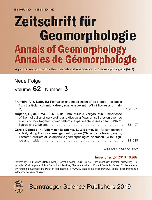
ZEITSCHRIFT FUR GEOMORPHOLOGIE
Decoding the Earth's Surface: A Geomorphological Journey.ZEITSCHRIFT FUR GEOMORPHOLOGIE is a prestigious journal dedicated to the field of geomorphology, published by GEBRUDER BORNTRAEGER from Germany. With the ISSN 0372-8854 and E-ISSN 1864-1687, this journal serves as a vital platform for researchers, professionals, and students interested in understanding the dynamic processes that shape our Earth’s surface. The journal has consistently maintained a solid academic reputation, achieving a Q3 ranking in key categories including Earth and Planetary Sciences (miscellaneous), Earth-Surface Processes, and Geography, Planning and Development as of 2023. This reflects its position within the global scientific community; ranked at #93 out of 179 in Earth-Surface Processes, contributing to crucial discussions surrounding environmental changes and landform evolution. Although ZEITSCHRIFT FUR GEOMORPHOLOGIE is not an Open Access publication, it offers extensive insights and findings from converged years spanning from 1979 to 2019 and again from 2021 to 2022. The journal is located at Johannesstr 3A, D-70176 Stuttgart, Germany, and plays a pivotal role in advancing geomorphological research that impacts natural sciences, ecology, and planning strategies worldwide.

GEOMORPHOLOGY
Unveiling the Forces Behind Earth's Landscapes.GEOMORPHOLOGY, published by Elsevier, is a leading journal that focuses on the study of landforms, along with the processes that shape them. Established in 1984, the journal has evolved to become an essential resource for researchers in the field of Earth-Surface Processes, currently holding a prestigious Q1 quartile ranking and occupying the 17th position out of 179 journals in Scopus, placing it within the top 10% of publications in this domain. This impact underscores its significance in advancing understanding within geosciences, providing a platform for both foundational and innovative research. GEOMORPHOLOGY publishes a diverse array of articles, from empirical studies to theoretical advancements, ensuring accessibility for a broad audience of students, professionals, and academics alike. With its commitment to high-quality research, this journal serves as a critical reference point for ongoing developments and discoveries in geomorphology.